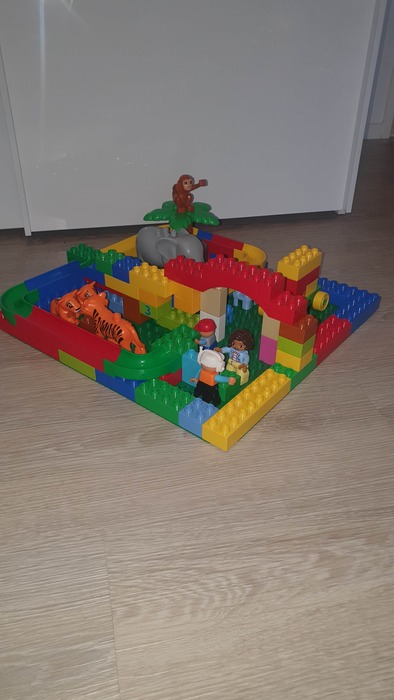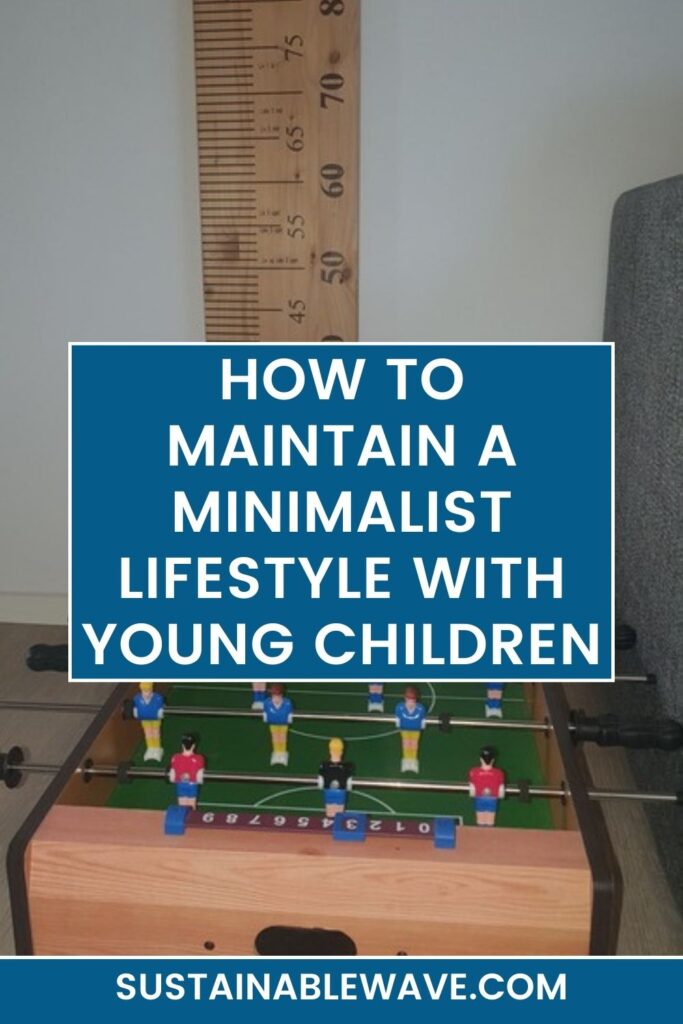Embracing a minimalist lifestyle with a bustling household of young ones might seem daunting, but believe me, it’s not only possible—it can be truly rewarding for the entire family. I’ve gathered some practical tips that can help.
It all starts with assigning a specific place for each item, reducing what’s unnecessary, and involving the kids in the process. Think about color-coding dishes for a fun, organized kitchen, and simplifying your meal plans to save time and space.
Remember, minimalism isn’t about depriving yourself; it’s about focusing on what truly matters and creating a peaceful, intentional living space.
Children’s Benefit From MinimalisT Lifestyle

Children can greatly benefit from a minimalist lifestyle. In a rampant world of consumerism, teaching kids the value of quality over quantity is invaluable.
A minimalist home provides a calm and structured environment, free from the overwhelming chaos of too many choices. This can lead to improved concentration and a sense of security.
Moreover, children learn to appreciate and take better care of their possessions when they have fewer, but more cherished, items. It’s a wonderful way to instill the principles of simplicity, gratitude, and contentment from a young age.
Involving Children in Minimalism
Involving children in your minimalist journey is not just practical, but it’s also a profound educational experience for them.
Start by making decluttering a family activity. Discuss the importance of donating and recycling, and let them decide which toys or clothes they’re ready to part with. Encourage them to think about what they really love and use.
This not only helps in reducing clutter but also teaches them decision-making and responsibility.
By including them in these processes, you’re not just tidying up space; you’re planting the seeds of mindful living in their young minds.
7 Tips For Maintaining a Minimalist Lifestyle With Young Children
Minimalism is often misunderstood as having the bare minimum, but it’s really about surrounding yourself with only the things that bring value and joy to your life. It’s about intentional living, where every item in your home serves a purpose or sparks happiness.
This philosophy encourages us to constantly assess our belongings and ask ourselves what we truly need and love. By adopting this mindset, we create an environment that’s not just clutter-free but also filled with items that truly enhance our daily lives.
Now let’s get into some specific tips you can adopt in your home to help maintain a minimalist lifestyle with young children in your life:
Designated Places
Creating designated places for each item in your home is a game-changer. It’s all about having a specific spot for everything, from toys to books to kitchen utensils. This not only helps keep the home tidier but also saves you time and stress when looking for things.
Imagine the calm that comes from knowing exactly where to find and return every item. It’s about creating a sense of order and peace. This habit can dramatically reduce the clutter that accumulates from items being left around and teaches everyone in the household the importance of organization and respect for shared spaces.
Own Necessities
Understanding and owning only what you truly need can be liberating. Take a moment to look at each item you own and ask yourself, “Do I use this regularly? Does it bring me joy or serve a purpose?” This isn’t about living with the bare minimum but rather making sure that what you have in your home serves you well.
You might find that you only need one good frying pan instead of three or that a few quality toys bring more joy to your children than a mountain of seldom-used ones. Embracing this principle helps create a space that feels open, clean, and tailored to your life’s actual needs.
Color-Coded Dishes
Implementing color-coded dishes is a fun and effective way to maintain order and teach responsibility. Each family member gets their own color for plates, cups, and even utensils. This not only adds a personal touch but also reduces the number of dishes used throughout the day.
It’s a simple yet powerful way to keep the kitchen more organized and make each person accountable for their items. This system simplifies decision-making and cleaning up, making meal times and kitchen duties smoother and more enjoyable.
Kitchen Decluttering
The kitchen is often the heart of the home, and keeping it decluttered is essential for a harmonious living space. Start by assessing your appliances and utensils. Do you really need that specialty gadget you used once last year?
Simplifying your kitchen tools to the essentials can make cooking and cleaning more efficient and enjoyable. Consider adopting a minimalist approach to your pantry as well, keeping it stocked with only the items you regularly use.
A decluttered kitchen invites a more mindful and serene cooking experience, making it a space where you and your family love to spend time.
Reducing Silverware
Taking a step to reduce your silverware can have a surprisingly freeing effect. It’s about breaking free from the ‘just in case’ mentality and keeping only what is regularly used. If you find yourself with drawers overflowing with forks and spoons, consider how many you genuinely need.
Perhaps each family member only needs one or two sets. This not only clears up space but also cuts down on washing and sorting time. It encourages everyone to be a bit more mindful about reusing and taking care of their items.
Plus, it’s one less thing to manage, bringing you closer to a simpler, more streamlined kitchen.
Utensil Simplification
Simplifying your collection of cooking utensils can transform your cooking experience. Take a look at your utensils drawer; you might discover multiple spatulas, ladles, or tongs that you rarely use.
By keeping just the essential tools that you love and use frequently, you create a more functional and organized cooking space. This means less time rummaging through drawers and more time enjoying the cooking process.
Plus, it’s easier to keep track of your tools and keep them clean. Embrace the ease and clarity that come with having just the right tools at your fingertips.
Capsule Meal Plan
A capsule meal plan is a minimalist approach to meal planning, where you select a small variety of meals and rotate them. This method simplifies grocery shopping, reduces food waste, and eases the daily decision-making of what to cook.
By choosing 2 to 3 favorite breakfasts, a couple of lunch options, and a handful of dinner recipes that everyone enjoys, you create a predictable and manageable routine.
This doesn’t mean meals become boring; rather, it allows for creativity within a structure, making meal times less stressful and more enjoyable.
Plus, it’s a great way to ensure you’re using up what you have, and keeping your kitchen and pantry decluttered and organized.
An Ongoing Effort
Maintaining minimalism is an ongoing effort, especially with a dynamic family life. As children grow, their interests and needs change, and what was essential a year ago might not be now.
Regular decluttering sessions become essential. It’s about evolving and adapting the principles of minimalism to fit your family’s changing needs. Don’t be discouraged by the occasional mess or accumulation; it’s all part of the journey.
Embrace the process, and remember that minimalism isn’t a destination but a continuous path toward a more intentional and focused life.

I’m Thomas, the owner of SustainableWave. Passionately promoting a sustainable planet. With experience in various eco-roles, I’ll share green tips, sustainability hacks, and personal eco-journeys on my blog.






